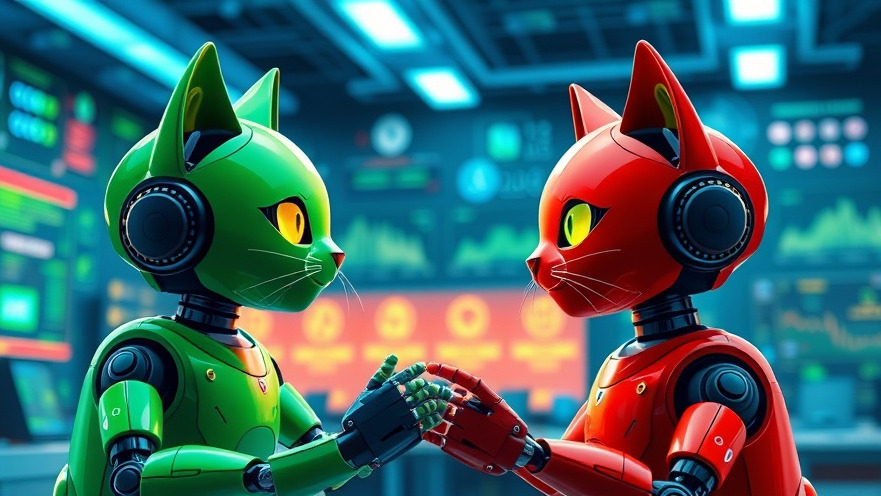
Imagine Language Models Learning Together: A New Frontier
As advancements in artificial intelligence continuously shape our world, the notion of language models (LMs) sharing knowledge and learning collaboratively is taking a central stage. Recent discussions highlight the potential benefits of collective training in reinforcement learning (RL), aimed at reducing the entrenched costs associated with data-heavy post-training processes.
A Costly Bottleneck in AI Development
The traditional methods for fine-tuning language models, such as using reinforcement learning from human feedback (RLHF), require centralized resources. This not only complicates logistics but also inflates costs significantly, hindering innovation in the rapidly evolving AI landscape. Innovations like DeepSeek-R1-Zero demonstrate how these models can enhance their reasoning abilities through RL, but the scaling difficulties remain a major obstacle.
Multi-Agent Collaboration: A Path Forward?
In response to the challenges posed by centralized approaches, emerging multi-agent strategies aim to revamp the way LMs are trained. These strategies focus on three primary areas: debate—where models refine output through dialogue, specialization—where specific roles are assigned to enhance efficiency, and self-improvement to encourage bootstrapped reasoning. However, even these promising multi-agent models often struggle with the necessary orchestration demands.
SAPO: A Decentralized Solution
Enter the SAPO framework, which introduces a decentralized approach to RL. Unlike traditional methods that require synchronized clusters, SAPO leverages autonomous nodes that generate and share results independently. Each node operates on a set of verifiable tasks that can be algorithmically validated, enabling scalable training without the vulnerabilities of centralized infrastructures.
The Future of AI: What This Means for Us
Collective learning signifies a transformative step towards smarter AI systems. It offers the possibility of more cost-efficient solutions while accelerating the pace of innovation. As various AI systems begin to communicate and collaborate, we could see a wealth of applications across industries—from healthcare improvements to advancements in creative fields like art and music.
A deeper understanding of these systems and their collaborative potential not only elevates our knowledge of AI but prepares us for a future where technology continues to serve humanity efficiently. Exploring the essentials of AI, from basic concepts to complex systems, can pave the way for everyone as we step into this new era.
 Add Row
Add Row  Add
Add 




Write A Comment